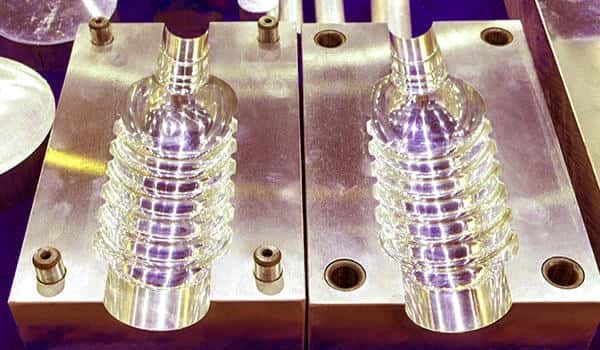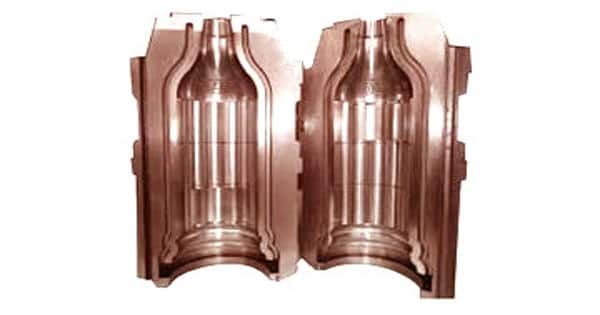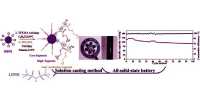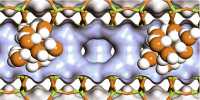Glass is used in a wide range of applications, from high-tech products in optics, telecommunications, chemistry, and medicine to everyday objects like bottles and windows. Glass shaping, on the other hand, is primarily based on processes such as melting, grinding, or etching. These processes are decades old, technologically demanding, energy-intensive, and severely limited in terms of shape realization.
For the first time, a team led by Prof. Dr. Bastian E. Rapp from the Laboratory of Process Technology at the Department of Microsystems Engineering at the University of Freiburg, in collaboration with the Freiburg-based start-up Glassomer, has developed a process that allows the glass to be formed easily, quickly, and in almost any shape using injection molding. The researchers published their findings in the journal Science.
Scientists have developed a process that makes it possible to form glass easily, quickly and in almost any shape using injection molding. The researchers presented their results in the journal Science.
Precision glass molding is a reproducible process that allows the manufacture of high-precision optical components from the glass without the need for grinding and polishing. The procedure is also referred to as ultra-precision glass pressing. It is used in the production of precision glass lenses for consumer products such as digital cameras as well as high-end products such as medical systems. The main advantage of digital lens production over mechanical lens production is the ability to produce complex lens geometries such as aspheres at a low cost.
“Glass has often been the second choice when it comes to materials in manufacturing processes for decades because its formation is too complicated, energy-intensive, and unsuitable for producing high-resolution structures,” Rapp explains. “Polymers, on the other hand, have enabled all of this, but their physical, optical, chemical and thermal properties are inferior to those of glass.” As a result, we were able to combine polymer and glass processing. Our process will enable us to quickly and cost-effectively replace glass with mass-produced products as well as complex polymer structures and components.”

Injection molding is the most important process in the plastics industry because it allows for the fast and cost-effective production of components in almost any shape and size in so-called high-throughput. Until now, transparent glass could not be molded in this process. With the newly developed Glassomer injection molding technology based on an in-house designed special granulate, it is now possible to mold glass in high throughput at only 130 °C. The 3D printer’s injection-molded components are then converted into glass via a heat treatment process, yielding pure quartz glass. This process uses less energy than traditional glass melting, resulting in increased energy efficiency. The formed glass components have a high surface quality, so that post-treatment steps such as polishing are not required.
Glassomer’s glass injection molding technology enables novel designs with a wide range of applications, including data technology, optics, and solar technology, as well as lab-on-a-chip and medical technology. “We see tremendous potential, particularly for small high-tech glass components with complex geometries. In addition to its transparency, quartz glass has a very low coefficient of expansion, which makes the technology appealing. “If the key components are made of glass, sensors and optics work reliably at any temperature,” explains Dr. Frederik Kotz, group leader at the Laboratory of Process Technology and Chief Scientific Officer (CSO) at Glassomer.
“We were also able to demonstrate that micro-optical glass coatings can improve the efficiency of solar cells.” This technology can now be used to create low-cost high-tech coatings with excellent thermal stability. It has a variety of commercial applications.”
The team, led by Frederik Kotz and Markus Mader, a doctoral student at the Laboratory of Process Technology, solved previously unsolved issues in glass injection molding, such as porosity and particle abrasion. Furthermore, the new method’s key process steps were designed to use water as the base material, making the technology more environmentally friendly and sustainable.
Injection molding is a manufacturing process that involves injecting molten material into a mold, or mold, to create parts. Injection molding can be done with a variety of materials, the most common of which are metals (for which the process is known as die-casting), glasses, elastomers, confections, and, most commonly, thermoplastic and thermosetting polymers. The part’s material is fed into a heated barrel, mixed (via a helical screw), and injected into a mold cavity, where it cools and hardens to the cavity’s configuration. After a product is designed, usually by an industrial designer or an engineer, molds are made from metal, usually steel or aluminum, and precision-machined to form the desired part’s features. Injection molding is widely used for the production of a wide range of parts, from small components to entire car body panels.















